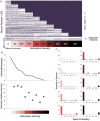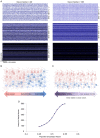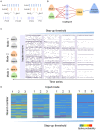A functional assembly framework based on implementable neurobionic material
- PMID: 33463062
- PMCID: PMC7805406
- DOI: 10.1002/ctm2.277
A functional assembly framework based on implementable neurobionic material
Abstract
Neurobionic material is an emerging field in material and translational science. For material design, much focus has already been transferred from von Neumann architecture to the neuromorphic framework. As it is impractical to reconstruct the real neural tissue solely from materials, it is necessary to develop a feasible neurobionics framework to realize advanced brain function. In this study, we proposed a mathematical neurobionic material model, and attempted to explore advanced function only by simple and feasible structures. Here an equivalent simplified framework was used to describe the dynamics expressed in an equation set, while in vivo study was performed to verify simulation results. In neural tissue, the output of neurobionic material was characterized by spike frequency, and the stability is based on the excitatory/inhibitory proportion. Spike frequency in mathematical neurobionic material model can spontaneously meet the solution of a nonlinear equation set. Assembly can also evolve into a certain distribution under different stimulations, closely related to decision making. Short-term memory can be formed by coupling neurobionic material assemblies. In vivo experiments further confirmed predictions in our mathematical neurobionic material model. The property of this neural biomimetic material model demonstrates its intrinsic neuromorphic computational ability, which should offer promises for implementable neurobionic device design.
Keywords: decision making; implementable device; neurobionic material; short-term memory.
© 2021 The Authors. Clinical and Translational Medicine published by John Wiley & Sons Australia, Ltd on behalf of Shanghai Institute of Clinical Bioinformatics.
Figures







Similar articles
-
Tissue bionics: examples in biomimetic tissue engineering.Biomed Mater. 2008 Sep;3(3):034010. doi: 10.1088/1748-6041/3/3/034010. Epub 2008 Aug 15. Biomed Mater. 2008. PMID: 18708710 Review.
-
A real-time closed-loop setup for hybrid neural networks.Annu Int Conf IEEE Eng Med Biol Soc. 2007;2007:3004-7. doi: 10.1109/IEMBS.2007.4352961. Annu Int Conf IEEE Eng Med Biol Soc. 2007. PMID: 18002627
-
Neural assembly computing.IEEE Trans Neural Netw Learn Syst. 2012 Jun;23(6):916-27. doi: 10.1109/TNNLS.2012.2190421. IEEE Trans Neural Netw Learn Syst. 2012. PMID: 24806763
-
Mimicking Biological Synaptic Functionality with an Indium Phosphide Synaptic Device on Silicon for Scalable Neuromorphic Computing.ACS Nano. 2018 Feb 27;12(2):1656-1663. doi: 10.1021/acsnano.7b08272. Epub 2018 Jan 17. ACS Nano. 2018. PMID: 29328623
-
The dynamic neural field approach to cognitive robotics.J Neural Eng. 2006 Sep;3(3):R36-54. doi: 10.1088/1741-2560/3/3/R02. Epub 2006 Jun 27. J Neural Eng. 2006. PMID: 16921201 Review.
References
-
- Lee Y, Lee TW. Organic synapses for neuromorphic electronics: from brain‐inspired computing to sensorimotor nervetronics. Acc Chem Res. 2019;52:964‐974. - PubMed
-
- Jung YH, Park B, Kim JU, Kim TI. Bioinspired electronics for artificial sensory systems. Adv Mater. 2019;31:e1803637. - PubMed
-
- Das N, Nagpal N, Bankura SS. A review on the advancements in the field of upper limb prosthesis. J Med Eng Technol. 2018;42:532‐545. - PubMed
-
- Ten Kate J, Smit G, Breedveld P. 3D‐printed upper limb prostheses: a review. Disabil Rehabil Assist Technol. 2017;12:300‐314. - PubMed
Publication types
MeSH terms
LinkOut - more resources
Full Text Sources
Other Literature Sources
Research Materials
